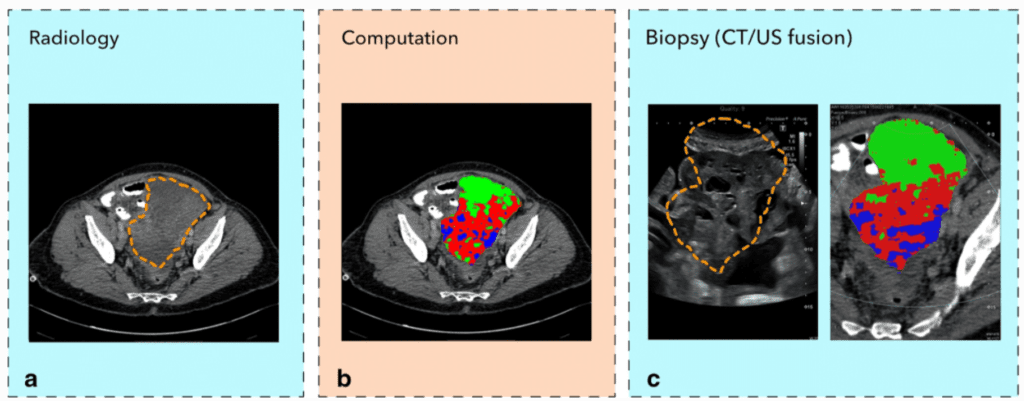
Biopsy smarter, not harder
Scientists working on diagnoses and treatments of cancer have reason to be encouraged by work at the University of Cambridge. Namely, we could see real progress in doctors able to ascertain more timely accurate diagnoses with less invasion of the patient’s body.
We are talking about the “b” word — not that one, the other one — biopsy. Most cancer patients undergo one or several biopsies to confirm the diagnosis and plan their treatment accordingly. But because this is an invasive clinical procedure, it would be better if there was a way to reduce the number of biopsies, while still maintaining the diagnosis accuracy.
So, could biopsies eventually go virtual? Not entirely, but some of them could be skipped. The enabler for “virtual” biopsies would be the technique used by the Cambridge scientists, which they discussed a study published in the journal European Radiology. They used an advanced computing technique involving routine medical scans, with the aim to enable doctors to take fewer, more accurate tumor biopsies.
“More accurate” is a key point. The technique stands up to the challenge of whether the diversity of cancer cells in a tumor can be successfully captured. Their computing technique reveals tumor heterogeneity from standard medical images, which is a step forward in “precision tissue sampling.”
This news study was led by Professor Evis Sala from the Department of Radiology and the gist of it involves combining computed tomography (CT) scans with ultrasound images. The technique offers a visual guide that can ensure a doctor sees the full complexity of a tumor. Co-first author Dr. Lucian explains:
“Our study is a step forward to non-invasively unravel tumor heterogeneity by using standard-of-care CT-based radiomic tumor habitats for ultrasound-guided targeted biopsies.” (A CT scanner uses x-rays and computing to create a 3D image of the tumor from image ‘slices’ through the body.)
A map on the image
They tested a small group of patients with advanced ovarian cancer who were due to have ultrasound-guided biopsies prior to starting chemotherapy. High grade serous ovarian (HGSO) cancer is known as a silent killer because its early symptoms can be difficult to pick up. Also, HGSO tumors tend to have that high level of tumor heterogeneity.
The patients first had a standard-of-care CT scan. Second, the team used radiomics: a process using high-powered computing methods to analyze and extract information from the images created by the scanner. That way, a scientist can identify and map areas and features of the tumor.
The tumor map is then superimposed on the ultrasound image of the tumor, and the combined image guides the biopsy procedure. This results in a more targeted biopsy, and more targeted biopsies means fewer biopsies are necessary.
The study marks an important milestone towards precision tissue sampling, which can not only make patients’ lives a bit easier, but it can also reduce the workload that doctors have to cope with. It’s still a small-scale study, however, and researchers admit that they need to test the findings on a larger clinical study.
The researchers also mention a wholesome anecdote surrounding the study. Fiona Barve (56), a science teacher who lives near Cambridge, was diagnosed with ovarian cancer in 2017 after reporting abdominal pain. She was diagnosed with stage 4 ovarian cancer. Doctors immediately recommended surgery and a course of chemotherapy, which she undertook. Since March 2019, she has been cancer free and is back to teaching three days a week.
“I was diagnosed at a late stage and I was fortunate my surgery, which I received within four weeks of being diagnosed, and chemotherapy worked for me. I feel lucky to be around,” said Barve.
“When you are first undergoing the diagnosis of cancer, you feel as if you are on a conveyor belt, every part of the journey being extremely stressful. This new enhanced technique will reduce the need for several procedures and allow patients more time to adjust to their circumstances. It will enable more accurate diagnosis with less invasion of the body and mind. This can only be seen as positive progress.”









